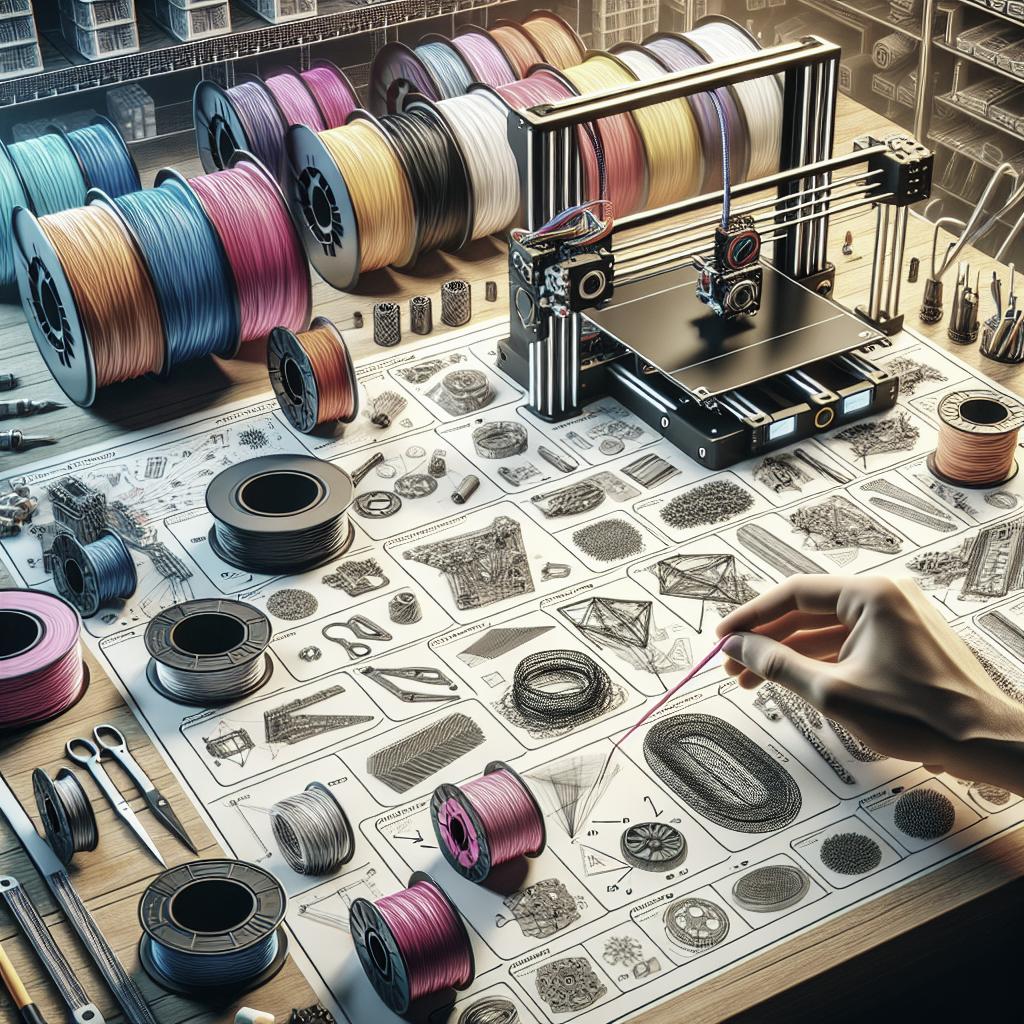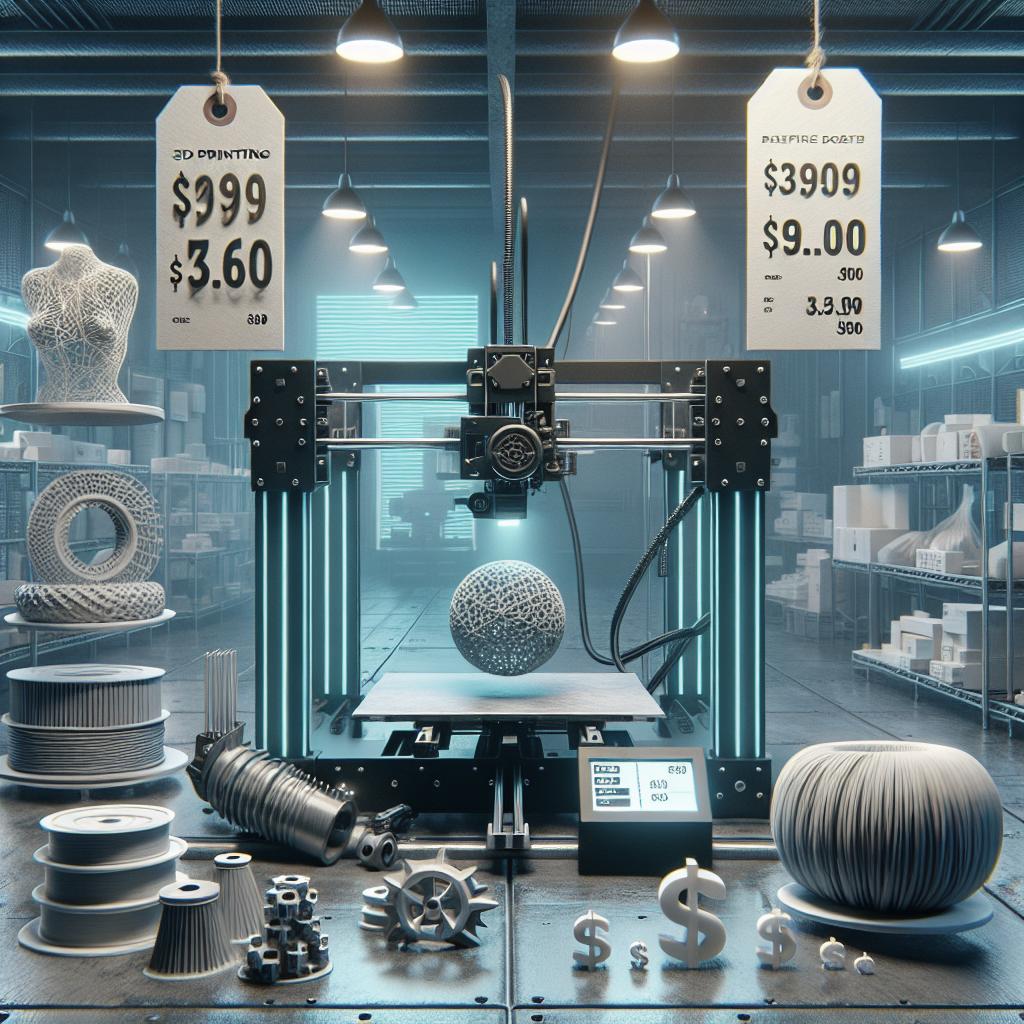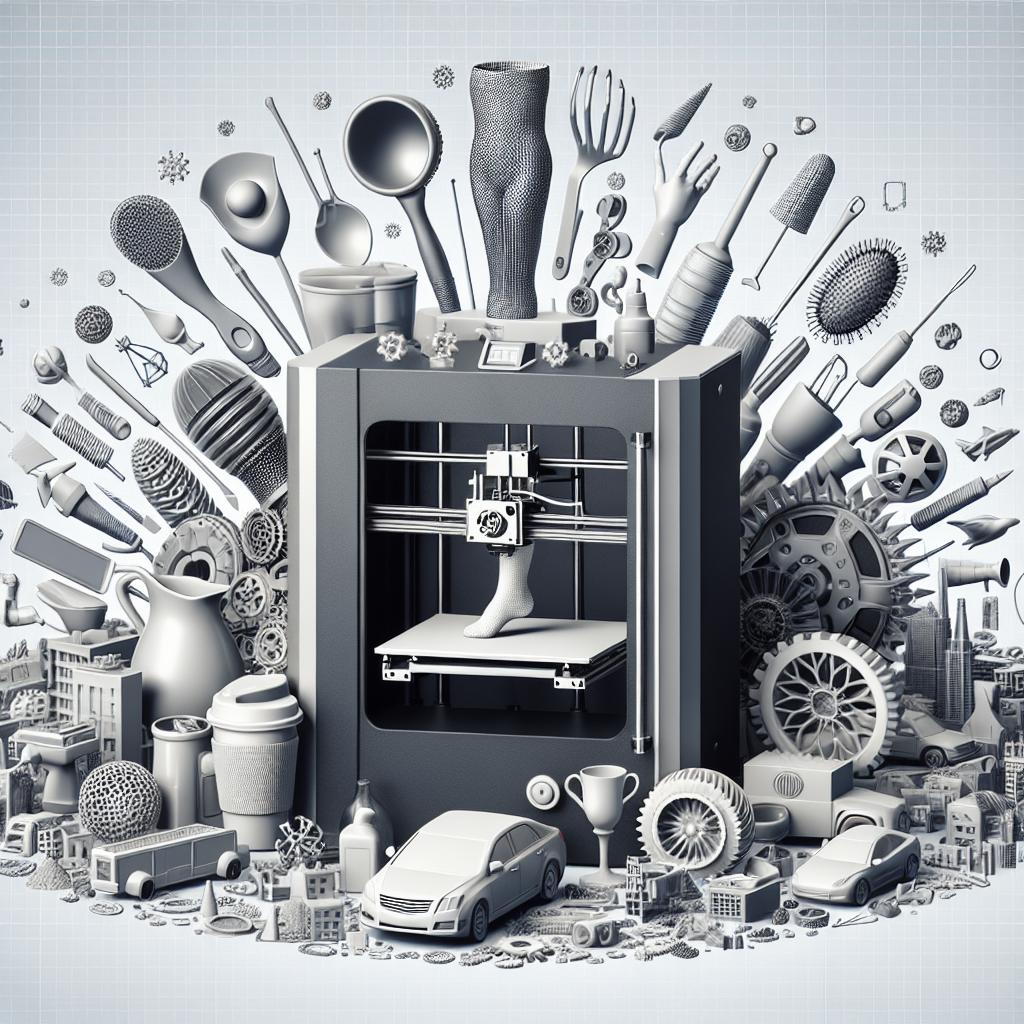<>
“`
How to Choose 3D Printer Filaments
Choosing the right filament for 3D printing can significantly affect the quality and functionality of your prints. Whether you’re a beginner, advanced user, or a professional engaged in prototyping and tooling, understanding the different filament materials is crucial. This guide will help you navigate the various options available, from beginner-friendly choices to specialized filaments for high-stress applications and commercial uses. By the end, you’ll have a comprehensive understanding of which filament suits your specific needs, ensuring you achieve the best results in your 3D printing projects.
1. Best Filament for Beginners
For those new to 3D printing, PLA (Polylactic Acid) is the go-to filament. It’s easy to use, doesn’t require a heated bed, and emits a pleasant, non-toxic odor. PLA is also available in a wide array of colors and finishes, making it perfect for first-time users learning the ropes. Moreover, its relatively low melting temperature reduces the risk of warping and other common printing issues.
Beginners might also consider PETG (Polyethylene Terephthalate Glycol). While slightly more challenging to print than PLA, PETG offers the advantage of being both strong and flexible. This makes it a good step-up material as you gain more confidence in your 3D printing skills. PETG is also more resistant to environmental factors like moisture and heat compared to PLA, broadening the scope of projects you can undertake.
2. Advanced and Professional Users
For those with more experience, ABS (Acrylonitrile Butadiene Styrene) presents a robust option. ABS requires a heated bed and enclosed printing environment to mitigate warping. However, its durability and resistance to high temperatures make it ideal for more demanding applications. Additionally, ABS is amenable to post-processing techniques such as sanding, painting, and acetone vapor smoothing, which can yield professional-grade finishes.
Nylon (Polyamide) is another excellent choice for advanced users, offering high strength, flexibility, and wear-resistance. It is an ideal filament for functional prototypes, tooling, and hardware. However, nylon filament requires careful handling and storage, as it is hygroscopic and can absorb moisture from the air, affecting printing quality. Therefore, a dedicated filament dryer is recommended to keep the material in optimal condition.
3. Materials for Prototyping and Tooling
When it comes to prototyping and tooling, Polycarbonate (PC) is a top performer. With its high impact resistance and temperature tolerance, PC is perfect for creating functional prototypes that need to withstand stress and strain. It can be more challenging to print with due to its high melting temperature and propensity for warping, but the resulting parts are exceptionally sturdy.
Another material for prototyping is TPU (Thermoplastic Polyurethane). It combines the best of both worlds: the flexibility of rubbers and the durability of plastics. TPU is particularly useful for creating parts that need to flex under stress or maintain elasticity. Its applications range from footwear prototypes to gaskets and seals, where durability and flexibility are paramount.
4. Commercial Use Needs
For commercial use, PETG and PLA+ (a modified version of PLA) are often the filaments of choice. PETG’s strength and moisture resistance make it suitable for creating consistent product parts. PLA+ improves upon standard PLA by offering enhanced durability and reduced brittleness, ensuring the production of high-quality, reliable prints.
High-performance blends such as Carbon Fiber-infused filaments cater to commercial applications demanding strength, rigidity, and lighter weight. These materials are particularly useful for creating aerospace, automotive, and robotics components. The high-stress resistance they offer ensures that commercial projects meet rigorous industry standards.
5. High-Stress Applications
PEEK (Polyether Ether Ketone) is considered one of the strongest thermoplastic materials available for 3D printing, making it suitable for high-stress applications. It offers exceptional chemical resistance, strength, and thermal stability, capable of withstanding high mechanical stress and extreme temperatures. Due to its advanced properties, PEEK is used in highly demanding industries like aerospace and medical implants.
Another robust material for high-stress applications is ULTEM (Polyetherimide). Similar to PEEK, ULTEM offers high thermal stability and mechanical strength but is more cost-effective. Its flame-retardant properties and resistance to a wide range of chemicals make it suitable for electrical and aerospace applications, where safety and durability are critical.
Lessons Learned
| Filament Type | Best For | Key Benefits | Considerations |
|---|---|---|---|
| PLA | Beginners | Easy to use, no heated bed required | Not very heat-resistant or durable |
| PETG | Beginners; Commercial Use | Strong, flexible, and durable | More challenging to print, requires precise settings |
| ABS | Advanced Users | Durable, heat-resistant, suitable for post-processing | Requires heated bed and enclosure |
| Nylon | Advanced Users; Prototyping and Tooling | High strength, wear-resistant, flexible | Hygroscopic, requires careful storage |
| Polycarbonate (PC) | Prototyping and Tooling | High impact resistance, temperature tolerance | High melting temperature, prone to warping |
| TPU | Prototyping and Tooling | Flexible, durable | Requires adjustments for proper adhesion |
| PLA+ | Commercial Use | Improved durability and reduced brittleness | Similar considerations as standard PLA |
| Carbon Fiber-infused | Commercial Use | High strength, rigidity, lightweight | Abrasive to nozzles, higher cost |
| PEEK | High-Stress Applications | Exceptional strength, chemical resistance | Very high printing temperature, expensive |
| ULTEM | High-Stress Applications | High thermal stability, flame-retardant | Expensive, challenging to print |
“`


